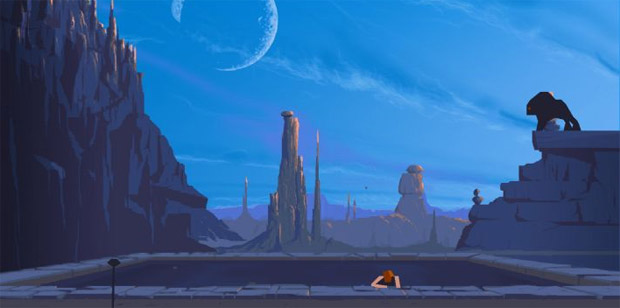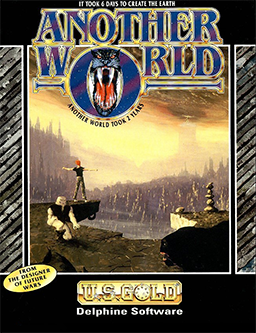This post has not been edited by the GamesBeat staff. Opinions by GamesBeat community writers do not necessarily reflect those of the staff.

Things have just started, and you're already drowning. Bubbles rise to the surface, reminding you that air is no longer in your lungs. Having no idea what to do, you frantically press anything. Your panic meets reward when you discover that every button is the "swim-for-your-life" button.
You feel safe when you escape the water, and you take a breather to admire your surroundings. But you're not safe at all. Standing still is not a good idea. Danger propels you forward, and you're always on the run. This game has no health bar — no score or lives. It's just you, your instincts, and a single button.
The idea of using one button to allow you to perform multiple actions over the course of a game is a discussion topic many designers have raised over the years — most notably Peter Molyneux, founder of Lionhead Studios. As fashionable as it's become, many fail to point out that a superb example of this design method already exists — and has for decades — in the form of Out of This World for the Amiga. (That's Another World to people outside the U.S.)
Out of This World was the model indie game before indie games existed. Stemming from the mind of a single man, Éric Chahi, it's a work of focused, artistic vision that blends skilled programming with graphics that are unique and lifelike, thanks to the beauty of rotoscoping. Chahi meant for the player to feel like a part of his world, and the controls are an extension of that philosophy. It's a place where everything is intuitive.
 Within the first few minutes, you're using one action button and the arrow keys to swim, kick, jump, pick up objects, and shoot. When you need extra speed to run from a terrifying polygonal monster dog, the environment provides it. You'll even grab for a life-saving vine automatically if you make a leap of faith. And when you find yourself imprisoned in a hanging cage with a friendly alien-marshmallow slave, it's pure instinct to swing your prison back and forth to reach escape velocity, using only the directional arrows.
Within the first few minutes, you're using one action button and the arrow keys to swim, kick, jump, pick up objects, and shoot. When you need extra speed to run from a terrifying polygonal monster dog, the environment provides it. You'll even grab for a life-saving vine automatically if you make a leap of faith. And when you find yourself imprisoned in a hanging cage with a friendly alien-marshmallow slave, it's pure instinct to swing your prison back and forth to reach escape velocity, using only the directional arrows.
Even after you pick up your primary weapon, you'll find that a single button gives you the ability to run, shoot, create a shield, charge up your shot, and do a combat roll. In the final boss sequence you jam on the thing like crazy as you slowly crawl across the stage to pull a crucial, life-saving lever. Anyone familiar with Metal Gear Solid 4's "microwave sequence" should know this: Out of This World did it first.
Even more impressive is the effect this one button has: It makes you forget that you're gaming. At every turn, the game begs you to react on impulse and rewards you for it, pulling you headfirst into a world that values atmosphere and story above all else. Without one line of dialogue, Éric Chahi tells a tale of class uprising on an alien world and of friendship. It's a story that's social yet personal, and he does it all simply by setting the player loose. The actions you perform change with each button press as the story itself changes. You'll find the plot littering the background and the foreground alike in the creatures that stalk you, the indentured servants toiling away in the mines, and the uprising happening all around you.
If anyone needs a reason to revisit one-button gaming in the modern age, this game is it. Out of This World is proof that control schemes have the power to immerse you completely in a world — maybe more so than the prettiest graphics and art direction. Through its simplified approach, Chahi's creation evokes a sense of constant panic, tension, and danger. You'll be frantic, frightened, awed, and angry, and most importantly, you'll feel like you're a part of it all.
